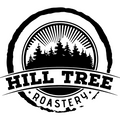Have you ever really considered the complexities of a great brewed cup of coffee? What about a great pint glass of craft beer? Once the beer is brewed and transported, there’s really not too much you have to do with it, right? You open the can or order your draft, and providing it is the temperature you like, you enjoy.
We’ve talked about different grind sizes, different coffee bean processing methods, and even factors that come to play in different regions of the coffee belt. I think it goes without saying that brewing a perfect cup of coffee is a quite thorough and scientific process. Are you ready to get nerdy? We’re talking about science today!
According to folks over at Smithsonian Magazine, when we are drinking our favorite cup of coffee, we tend to “like drinks that contain coffee constituents at 1.2 to 1.5 percent by mass (as in filter coffee), and also favor drinks containing 8 to 10 percent by mass (as in espresso).” But, how do we go about achieving that? Good question! There are a few different technologies that Smithsonian Magazine teaches us about that help us achieve 8-10% coffee concentration. Pour-over (my favorite), an espresso machine, and an Aeropress are just a few.
Brew Process
Some things to consider are the two basic brew processes: fully submerging the coffee grinds in the brew water and brewing in a more time-controlled environment, and flow-through brewing where the water flows over the coffee bed. Flow-through systems like a pour-over or Aeropress depend on grind size to control the rate at which the water flows through the coffee bed. On top of your basic brew process, your water-to-coffee ratio, water chemistry, and your grind size will all play an important role.
Water Chemistry
Research has shown the water chemistry plays a huge part in the flavor of your cup of coffee. Last year, I switched from using tap water to filtered water, and have been pleasantly surprised with the outcome. In my naivety, I assumed the tap water would be boiled, but boiling the water just doesn’t do the trick!
Here’s a video with details on the research from CSEC and the University of New South Wales where they talk about how to use water to get the most out of your cup of coffee.
Grind Size
The particle size of your coffee, and the grinder you use to achieve those particles, is vital as well. We talked about this in detail in our Grinding Beans For A Consistent Brew article, but to review: burr grinders with the appropriate and consistent grind size will deliver the best cup of coffee! Check out the article for an in-depth look at grind size and why it’s important.
Freshness
I think it goes without saying that the freshness of any product you are consuming is important for both the nutrients and the flavor that freshness provides. Much of that comes down to the chemistry of fresh versus stale ingredients. In physical chemistry, a formula called the Arrhenius equation was based on studies on the relationship between temperature and the rate at which it would affect chemical reactions in things like coffee and milk. Hill Tree Roastery provides small-batch freshly roasted coffee to deliver you a product void of any chemical reaction of sitting on a store shelf for months.
So, whether you want to dive into the mathematics and chemistry of a great cup of coffee or if you simply know what tastes best to you, Hill Tree Roastery can kick off your perfect cup by offering you single-source, small-batch, fresh-brewed coffee bean to throw in whatever brewing device you like to use.
Christie Trent - Coffee Contributor / Staff Writer
Christie is a programmer, data nerd, and blogger. Christie is the founder of Athena Blue (athenablue.dev) where she works as a web and database programmer, and Pain Free Journey (painfreejourney.com) where she produces digital content to inspire those suffering with chronic pain. When she isn't working, she enjoys traveling throughout the great state of West Virginia sharing her adventures and findings on her blog, Wild and Wanderin. Although she enjoys many origins of coffee, her favorite Hill Tree coffee beans are the ones from Ethiopia.

